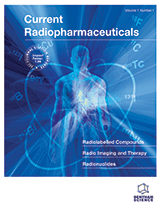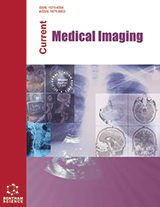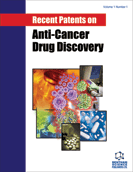Abstract
The main purpose of this study was to evaluate Gd-DTPA kinetics for the differential diagnosis between malignant and benign breast lesions. As a secondary aim, Gd-DTPA kinetics in malignant lesions was tested for predicting axillary lymph nodes involvement. Eighty-eight patients who underwent MRI for suspected breast tumor were selected from our database. All patients underwent the same acquisition protocol consisting of pre-contrast and dynamic contrastenhanced MRI. For all of them clinical and histopathological data were available. MR studies were performed on the same 1.5T scanner with a standard dedicated breast coil. Pre- and post-contrast dynamic images were used to calculate R1, R2 relaxation rates and proton density maps. The maximum influx rate (MIR) as well as the corresponding time (TMIR) were derived using R1 relaxation rate maps and relative changes as a function of time. Histopatological analysis led to the diagnosis of 46 breast carcinomas and 42 benign lesions. All breast carcinomas and 24 out of 42 benign lesions showed contrast-enhancement. The mean MIR was 0.75±0.14 (SD) sec-2 in malignant tumors and 0.53±0.14 (SD) sec-2 in contrast-enhancing benign breast lesions (p<0.0001). The TMIR was 1.40±0.43 min and 3.01±1.92 min (mean±SD) in enhancing malignant and benign lesions, respectively (p<0.0001). In malignant tumors, TMIR was not significantly different in node negative and node positive carcinomas whereas MIR was significantly lower in node negative carcinomas (0.67±0.11 versus 0.83±0.12 respectively, p<0.0001). Our findings suggest that quantitative assessment of Gd-DTPA kinetics may be an additional tool characterized for enhancing breast lesions and for predicting axillary lymph nodes involvement in malignant breast carcinoma.
Keywords: Breast neoplasms, contrast enhancement, kinetic studies, magnetic resonance (MR).
Current Radiopharmaceuticals
Title:Parametric MR Dynamic Imaging for Breast Lesions Characterization and Prediction of Lymph Nodes Involvement
Volume: 7 Issue: 2
Author(s): Andrea Ciarmiello, Maria C. Gaeta, Martina Meniconi, Amalia Milano, Bruno Alfano, Silvana Del Vecchio and Marco Salvatore
Affiliation:
Keywords: Breast neoplasms, contrast enhancement, kinetic studies, magnetic resonance (MR).
Abstract: The main purpose of this study was to evaluate Gd-DTPA kinetics for the differential diagnosis between malignant and benign breast lesions. As a secondary aim, Gd-DTPA kinetics in malignant lesions was tested for predicting axillary lymph nodes involvement. Eighty-eight patients who underwent MRI for suspected breast tumor were selected from our database. All patients underwent the same acquisition protocol consisting of pre-contrast and dynamic contrastenhanced MRI. For all of them clinical and histopathological data were available. MR studies were performed on the same 1.5T scanner with a standard dedicated breast coil. Pre- and post-contrast dynamic images were used to calculate R1, R2 relaxation rates and proton density maps. The maximum influx rate (MIR) as well as the corresponding time (TMIR) were derived using R1 relaxation rate maps and relative changes as a function of time. Histopatological analysis led to the diagnosis of 46 breast carcinomas and 42 benign lesions. All breast carcinomas and 24 out of 42 benign lesions showed contrast-enhancement. The mean MIR was 0.75±0.14 (SD) sec-2 in malignant tumors and 0.53±0.14 (SD) sec-2 in contrast-enhancing benign breast lesions (p<0.0001). The TMIR was 1.40±0.43 min and 3.01±1.92 min (mean±SD) in enhancing malignant and benign lesions, respectively (p<0.0001). In malignant tumors, TMIR was not significantly different in node negative and node positive carcinomas whereas MIR was significantly lower in node negative carcinomas (0.67±0.11 versus 0.83±0.12 respectively, p<0.0001). Our findings suggest that quantitative assessment of Gd-DTPA kinetics may be an additional tool characterized for enhancing breast lesions and for predicting axillary lymph nodes involvement in malignant breast carcinoma.
Export Options
About this article
Cite this article as:
Ciarmiello Andrea, Gaeta C. Maria, Meniconi Martina, Milano Amalia, Alfano Bruno, Vecchio Del Silvana and Salvatore Marco, Parametric MR Dynamic Imaging for Breast Lesions Characterization and Prediction of Lymph Nodes Involvement, Current Radiopharmaceuticals 2014; 7 (2) . https://dx.doi.org/10.2174/1874471007666141110094425
| DOI https://dx.doi.org/10.2174/1874471007666141110094425 |
Print ISSN 1874-4710 |
| Publisher Name Bentham Science Publisher |
Online ISSN 1874-4729 |
 20
20
- Author Guidelines
- Bentham Author Support Services (BASS)
- Graphical Abstracts
- Fabricating and Stating False Information
- Research Misconduct
- Post Publication Discussions and Corrections
- Publishing Ethics and Rectitude
- Increase Visibility of Your Article
- Archiving Policies
- Peer Review Workflow
- Order Your Article Before Print
- Promote Your Article
- Manuscript Transfer Facility
- Editorial Policies
- Allegations from Whistleblowers
Related Articles
-
N-Terminal-Dependent Protein Degradation and Targeting Cancer Cells
Anti-Cancer Agents in Medicinal Chemistry Copper Compounds in Anticancer Strategies
Current Medicinal Chemistry Nanotechnology as a Promising Strategy for Anticancer Drug Delivery
Current Drug Delivery Targeting the Hedgehog Signaling Pathway with Small Molecules
Anti-Cancer Agents in Medicinal Chemistry High Order Texture-Based Analysis in Biomedical Images
Current Medical Imaging Celecoxib Inhibits Helicobacter pylori-induced Invasion of Gastric Cancer Cells Through an Adenine Nucleotide Translocator-Dependent Mechanism
Anti-Cancer Agents in Medicinal Chemistry HDAC Inhibitors as Novel Anti-Cancer Therapeutics
Recent Patents on Anti-Cancer Drug Discovery The Relationship Between Social Support, Social Constraint, and Psychological Adjustment for Patients with Rare Autoimmune Disease
Current Rheumatology Reviews Cancer Nanotechnology - Prospects for Cancer Diagnostics and Therapy
Current Cancer Therapy Reviews Editor’s Perspective: Metabolomics Currently
Current Metabolomics microRNAs in Cancer: Lessons from Melanoma
Current Pharmaceutical Design Synthesis and Biological Evaluation of Novel Triazoles Linked 7-hydroxycoumarin as Potent Cytotoxic Agents
Anti-Cancer Agents in Medicinal Chemistry Integrin α4β7 Antagonists: Activities, Mechanisms of Action and Therapeutic Prospects
Current Immunology Reviews (Discontinued) Treatment of Lung Cancer Using Nanoparticle Drug Delivery Systems
Current Drug Discovery Technologies Cell-penetrating Peptide-mediated Nanovaccine Delivery
Current Drug Targets Oxaliplatin-mediated Inhibition of Survivin Increases Sensitivity of Head and Neck Squamous Cell Carcinoma Cell Lines to Paclitaxel
Current Cancer Drug Targets Neuropeptides as Therapeutic Targets in Anxiety Disorders
Current Pharmaceutical Design Antioxidant Effects and in vitro Cytotoxicity on Human Cancer Cell Lines of Flavonoid-Rich Flamboyant (<i>Delonix regia</i> (Bojer) Raf.) Flower Extract
Current Pharmaceutical Biotechnology HPV Pathway Profiling: HPV Related Cervical Dysplasia and Carcinoma Studies
Current Pharmaceutical Design Advances and Perspectives in Cancer Nanotherapy: The Added- Value of Nanocarriers
Current Nanomedicine






















